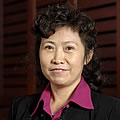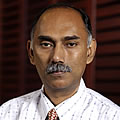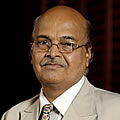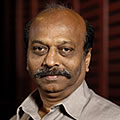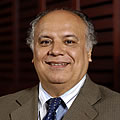Global Tobacco Control Program
The world’s tobacco fighters convene in Baltimore for a three-week course
Seventeen of the top tobacco control officials in some of the most tobacco-intensive countries on Earth are gathered in a conference room at the Johns Hopkins Bloomberg School of Public Health. From India, where almost half of men smoke and lethally cheap hand-rolled cigarettes called bidis outsell conventional “white cigarettes” by a factor of seven, a half-dozen public health experts and researchers from the subcontinent huddle around a laptop. A quartet of Chinese officials sits a table away, representing the country that consumes a third of the planet’s cigarettes. There’s a pair of government officers from Brazil, the world’s number-one leaf tobacco exporter, and participants from other smoking hot spots: Vietnam, Indonesia and Bangladesh.
They all convened in Baltimore in June for the second annual Global Tobacco Control Leadership Program, an intensive three-week training workshop organized by the School’s Institute for Global Tobacco Control. The program was part of the Bloomberg Initiative, a new global antismoking effort, launched with $125 million in initial funding for the first two years from New York Mayor Michael Bloomberg.
The School is one of five partner organizations involved in the Initiative to reduce tobacco use in low- and middle-income countries. One of its key components is a tobacco control training site, Global Tobacco Control, which features free, online training provided by tobacco control experts from around the world based on a curriculum developed by Bloomberg School faculty.
The concept behind the recent Leadership Program was to exchange tobacco control strategies and principles across borders and cultures. Spearheading that effort were the Institute’s co-directors, Frances Stillman, EdD, EdM, and Jonathan Samet, MD, MS—leaders in the science and policy of tobacco regulation. They were joined by a host of other veteran tobacco fighters from around the world. New York City Health Commissioner Thomas Frieden, MD, MPH, who successfully led the battle for a smoke-free Manhattan, gave a keynote address on how tobacco control can save 100 million lives. Harvard School of Public Health associate professor Gregory Connolly, DMD, MPH, architect of the pioneering Massachusetts Tobacco Control Program that has halved the state’s cigarette consumption since 1993, drilled the course participants on how to aggressively target lawmakers and local media. Bungon Ritthiphakdee, a tobacco control advocate from Thailand, spoke about how to convince lawmakers to raise taxes and use portions of the revenue for health promotion. Thailand is now a leader among developing countries in getting gold-standard tobacco control policies in place.
In between workshops and presentations, participants had the opportunity to exchange information among themselves. “A lot of us already know each other, but normally we don’t have the time to sit down together,” said Nevin Wilson, director of the India Resource Centre, the regional resource centre of the International Union Against Tuberculosis and Lung Disease. “Here, we can shut off the email and just talk.”
It wasn’t all work: After each day’s sessions, the global visitors took in the local sights—they attended an Orioles game, went to a crab lunch on the Chesapeake Bay, and had a few minutes for shopping. “I think we bought all the digital cameras in Baltimore,” says Dr. Syed Mahfuzul Huq, from Bangladesh’s National Institute of Cardiovascular Disease.
At the end of the course, participants delivered presentations on the state of each country’s tobacco control efforts. The challenges they detailed were varied, from imposing taxes on the huge and largely unregulated bidi industry in India and Bangladesh to dealing with China’s estimated 300 million-strong smoking population, many of whom live in rural regions and smaller cities that lack any effective tobacco control at all. Sri Utari Setyawati, a Jakarta-based member of the Indonesian Forum of Parliamentarians on Populations & Development, said that her greatest priority was raising public awareness and political will in a country that, until recently, understood little about the fundamental dangers of tobacco use. “This is the toughest issue I’ve ever done in my life,” she said. “But the more difficult the situation, the more interesting I find the challenge.”—David Dudley
| Wang Jie “The training class is very useful—it gives us the knowledge to know how we can improve our implementation and share knowledge with other countries. Capacity building and the government commitment to tobacco control is very important. For us, it’s a priority.” |
| Syed Mahfuzul Huq, MBSS, MSS “In Bangladesh, cigarettes are only a small part of the problem—most tobacco consumption here is in chewing tobacco and bidis. But the Western [tobacco control] emphasis is all on cigarettes. No matter how much you tax cigarettes in Bangladesh, it won’t make much difference. Your shoe will not fit my foot.” |
| Brij Mohan Shrivastava “The writing on the wall is clear: Tobacco is dying. But it should happen sooner rather than later, so that millions of lives can be saved.” |
| Packirisamy Padmanaban “A smoke-free Chennai—that is my dream and mission. It’s going to be a big struggle. But let me start, so that my dreams can become a reality.” |
| Humberto Jose Coelho Martins “At the moment, Brazil has a strong smoking law. But there’s a gap, and it’s very important that I fill that gap. That’s my objective.” |

